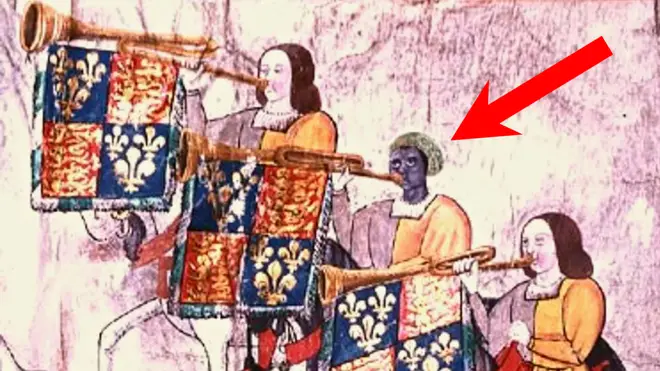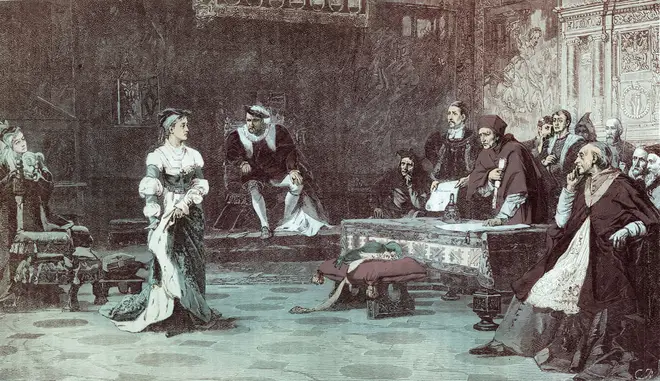On Air Now
From Wolf Hall to Concert Hall with Debbie Wiseman 9pm - 10pm
28 April 2022, 17:45

Although people of African descent have been in the UK for at least 2,000 years, 16th-century trumpeter John Blanke is thought to be the first Black Briton to have an image of him recorded.
The 60 foot-long Westminster Tournament Roll is a painted manuscript depicting a tournament held in 1511 by King Henry VIII to celebrate the birth of his first son.
Scenes from the tournament are depicted along the lengthy manuscript, covering imagery of the jousting, the audience, and the musicians playing at the event.
Among the musicians stands John Blanke, a trumpeter who worked in the court of King Henry VIII, and had previously played for his father, King Henry VII.
Blanke appears twice in this historic depiction, and the painting plays an important part of his story as the only Black Tudor to be depicted in art.
Let’s take a deeper look at his story...
Read more: The exploitation of pianist Thomas ‘Blind Tom’ Wiggins, the musical prodigy born into slavery
Had the honour of uploading the #JohnBlankePlaque at Trinity Laban https://t.co/qd87mpuJER? pic.twitter.com/OlgbBVRiir
— JohnBlankeProject (@WhoIsJohnBlanke) January 15, 2022
John Blanke may not have always been, John Blanke.
Although his name was written into court records on a number of occasions, historians have suggested that his surname ‘Blanke’ may have been attributed to him as due to the colour of his skin, derived from the word, ‘black’.
In some written accounts, the musician was referred to as “John Blanke the blacke trumpeter”, emphasising the performer’s skin colour as well as his instrument.
The first time Blanke appeared on record was when he wrote directly to King Henry VIII to request a pay rise, when he found out the other trumpeters in court were earning more than him.
Not only did the king approve his request, but his pay was backdated to compensate for lost wages, the musician also received a promotion.
Read more: Who was Hazel Scott, the forgotten jazz virtuoso who fought against racial segregation?
Black musicians had a lengthy presence in medieval and renaissance Europe long before the court of the English King Henry VII.
In the 1300s, the Holy Roman Emperor Henry VI reportedly employed Black trumpeters, and later during the 16th century, Scottish King James IV employed a Muslim Moor drummer.
France also had a Black trumpeter in their court around the same time as Blanke played in England; the French musician is depicted on the tapestry, ‘The Field of the Cloth of Gold’, similar to Blanke’s illustration.

While not much is known about Blanke’s life prior to his employment in the royal court, historians surmise that the musician arrived as part of Catherine of Aragon’s entourage in 1501.
The soon-to-be Queen of England had two enslaved attendants when she arrived from Spain, one being Catalina of Motril, her bedchamber servant.
Catalina was enslaved by Catherine prior to arriving in England, and while slavery was not a recognised status in England at the time, unlike Blanke, there are no records she was ever paid for her service.

The King's Singers perform 'Greensleeves' at a central London church
When Blanke appeared on the Westminster Tournament Roll, he is dressed in the same grandeur as the other trumpeters, in gold and silver. Like the other trumpeters, the multi-talented musician is also depicted riding a horse while playing.
However, the main difference is the turban that the musician sports. While the headwear could signify the trumpeter’s faith, historians note that King Henry VIII liked to dress himself and his court in styles and fashions from across the globe, so it is possible Blanke’s headwear is purely for aesthetics.
Blanke’s clothing also suggests a status that wasn’t commonly afforded to non-white members of society in the 16th century. This status is supported by the fact that in 1512, King Henry VIII gave the trumpeter a wedding gift in the form of clothes.
While it isn’t known who Blanke married, the fact that the king gifted the trumpeter wedding clothes – a gown of violet velvet and a hat – shows the musician held royal favour and a high position within the court.

Blanke’s wedding gift in 1512 is the last time his name is recorded in court, as in the lineup of trumpets in 1514, his name is notably missing.
What happened next to Blanke is unknown, but his legacy lives on as one of the first people of African descent in British history to have both a visual and written record.
The musician challenged authority, fought for equal pay, was held in royal favour, and was such a talented musician he played for two monarchs.
Blanke was a civil rights activist ahead of his time and stars in an important chapter in Black British history as the face of diversity in Tudor England.
The Walker Art Gallery in Liverpool, England will feature John Blanke in their major upcoming exhibition, The Tudors: Passion, Power and Politics (21 May to 29 August 2022).